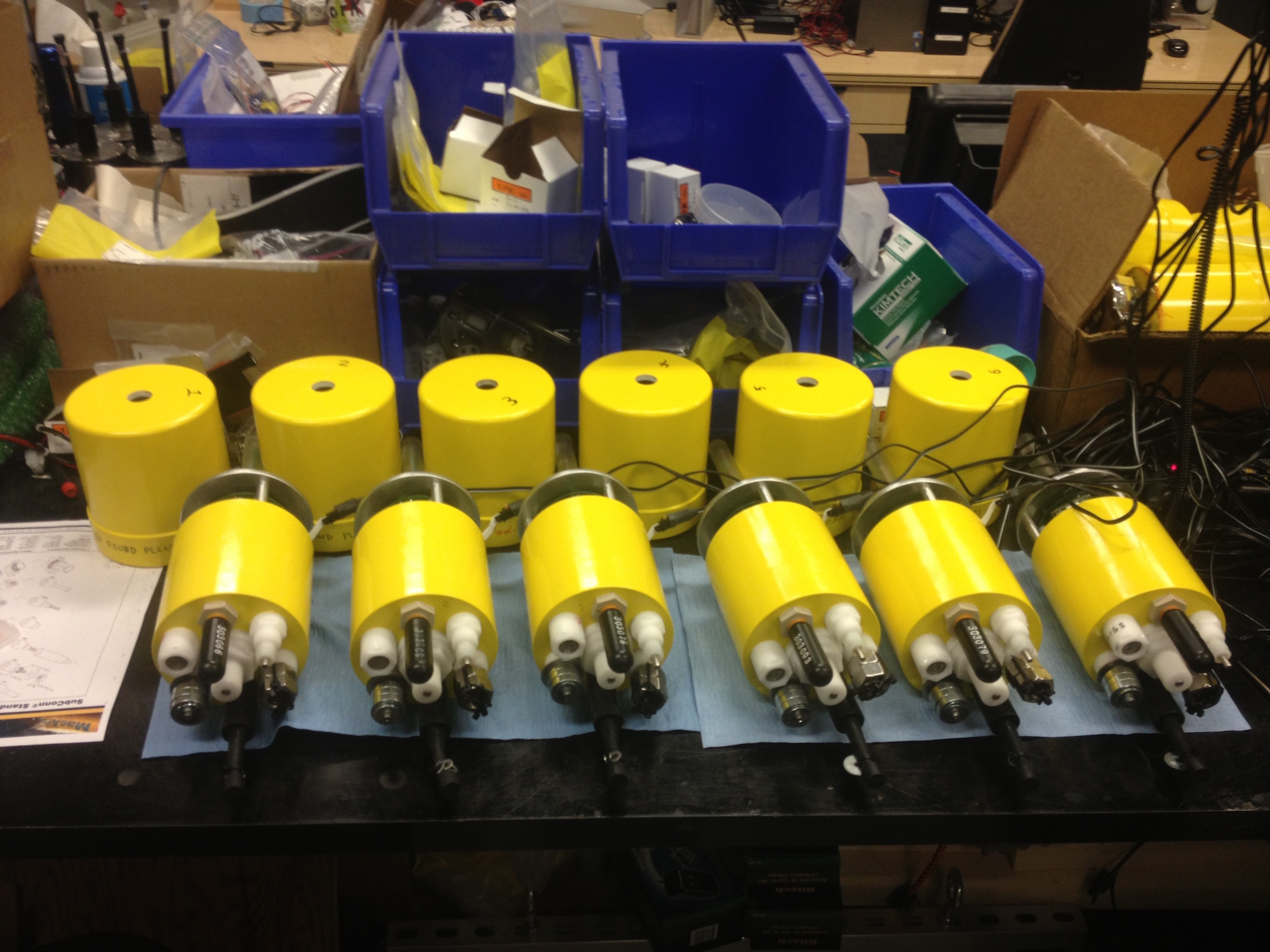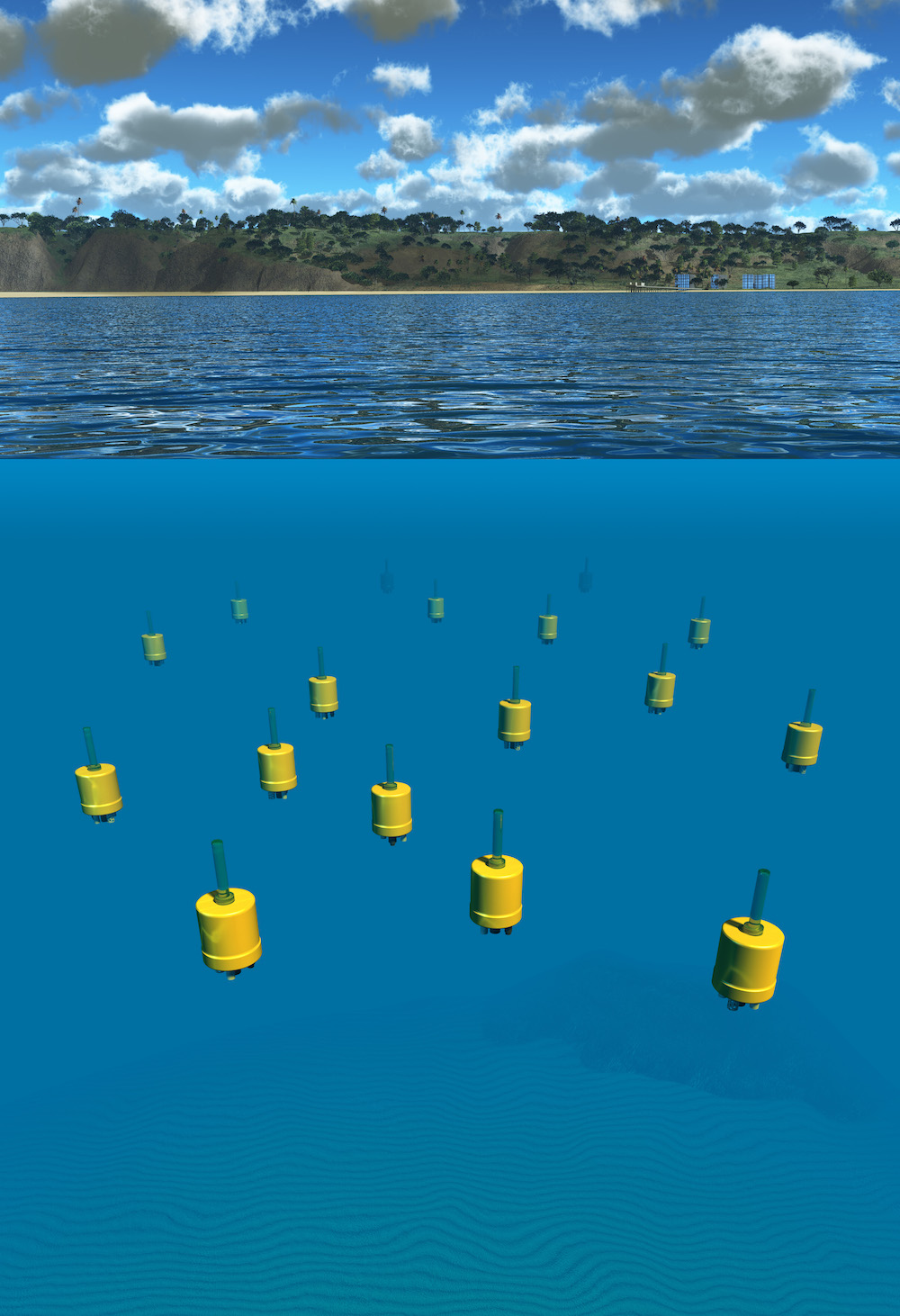Twenty years after they first met and 15 years since they began work on the project, oceanographers Jules Jaffe and Peter Franks have finally realized their vision of a robot that can be programmed to act like plankton. Their Miniature Autonomous Underwater Explorer (M-AUE) gets pushed around by the currents, tracks its surroundings, and allows scientists to measure oceanic properties in 3D relatively inexpensively, for the first time. Also, it happens to look like a Minion from the Despicable Me movie series, but that’s more of an accidental side effect.
If all goes according to plan, the data gathered by the robots could show how notoriously tricky ocean movements affect aquatic creatures like plankton, or how to limit the spread of algal blooms and oil spills. Their robots are described in the Jan. 24 issue of Nature Communications.
Videos by VICE
Read More: Ocean Babies Are Hard to Track, So Scientists Are Bringing in the Bots
For Jaffe and Franks, both of the Scripps Institution of Oceanography, the publication is the culmination of almost two decades of work. It all began when Jaffe said to Franks, “You know, I was thinking of building some drifters.”
Lots of people build “drifters,” or ocean-going robots. Franks wanted to know how theirs would be different. “What if we made them so they could change their buoyancy, and they could go up and down like plankton?” Jaffe responded.
“They look a lot like the Minions from Despicable Me—all they need are glasses and overalls.”
At that time, Franks suspected that the swimming behaviour of plankton—in patches—helped them in feeding and survival. “I had this idea, about how these flows in the ocean called internal waves—they’re great, big, slow waves—could interact with the swimming of plankton to cause them to form patches,” Franks told me over the phone.
The first prototype of the ocean-going robot looked like a chunk of sewer pipe. “The next one was really beautiful: it was an aluminum sphere,” Franks said. “But they were big, compared to phytoplankton, which are really tiny and less than a millimetre in size.”

Image: Jules Jaffe
Jaffe’s latest model is a yellow, grapefruit-sized M-AUE. It can measure and report back on its liquid environment, and it’s relatively cheap and small. “They look a lot like the Minions from Despicable Me—all they need are glasses and overalls,” Franks said.
Jaffe recently tested 16 M-AUEs off the coast of Torrey Pines, San Diego.
Each M-AUE has a shell that’s comprised of two concentric cylinders, made out of a dense, fine-celled and buoyant foam that was used on the Alvin Submarine, ensuring heavy batteries won’t sink it. The robots also have a temperature sensor, a pressure sensor, an onboard computer and an underwater microphone called a hydrophone. They sink to about 10 meters, but can probably go down to 50 before irretrievably sinking into the abyss, Franks said. Once at the programmed depth, they use their pistons to adjust their location, decreasing or increasing their volume while the mass stays the same.
One thorny issue was tracking these mini robots underwater. Jaffe decided to deploy three to ideally five cylindrical moorings, which have GPS receivers and send out pings to the M-AUEs every 12 seconds. The M-AUEs navigate within the area formed by the floating moorings using these pings, and the scientists can watch as the waves push them around.
The bots could help scientists pick better locations for protected marine areas, allowing endangered sea life the chance to flourish. Mussels, starfish, clams, sea urchins—many of these creatures have a life stage that’s planktonic. They float around for weeks or even years before ending up in their adult habitats.
“How do they do that? The answer is, nobody really knows,” Franks said, suggesting tides or winds as possibilities. Either way, programming the M-UAEs to mimic the behaviour of sea creatures could shed some light on the mystery. Once the M-AUEs are done, they float up to the surface, their LED lights flashing orange, and scientists venture out on small boats to pick them up.

Image: Jules Jaffe
Or, as in one case, they have to venture elsewhere.
In the summer of 2016, a PhD candidate studying with Franks was tracking the M-AUEs when the robots started to speedily swim into Mission Bay, San Diego. The scientists diligently followed their Minions, and found them at a bar.
“What had happened was some fishermen had found them—and we wrote on them, ‘If found please return to Jules Jaffe for reward,’” Franks recalled. “In fact, they’d actually completely ruined our experiment … and gone to a bar to drink their reward money.”
Get six of our favorite Motherboard stories every day by signing up for our newsletter.
More
From VICE
-

CSA Images/Getty Images -

buradaki; NASA / Getty Images -

Screenshot: Shaun Cichacki

